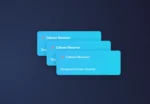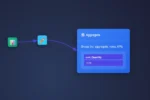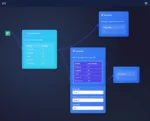
by tyler garrett | Jun 23, 2025 | Data Visual
In the rapidly evolving world of pharmaceutical research, data isn’t just abundant; it’s exploding into unprecedented dimensions of complexity and potential. Navigating this landscape without strategic analytical tools and techniques is akin to attempting surgery in complete darkness. Visualization tools illuminate this critical process, turning tangled webs of research data into clear, compelling insights. Effective drug discovery visualization not only accelerates the transition from research benches to pharmacy shelves, but also empowers scientific and business leaders alike. Pharmaceutical companies that embrace advanced analytics technology and robust visualization practices position themselves at the forefront of medical innovation. Dive in with us as we explore the impact, challenges, and strategic implementation of effective drug discovery data visualization.
Harnessing Data Visualization to Propel Drug Discovery
Drug discovery conjectures a unique data dilemma. Researchers continuously accumulate massive datasets from clinical trials, molecular screenings, genome sequencing, and patient outcome data. Translating this vast ocean of data into actionable insights requires clarity that traditional spreadsheet analysis or basic graphing cannot sustain. Data visualization acts as a vital translation layer, converting complex datasets into intuitive, interactive visual representations, empowering stakeholders to quickly digest critical details.
Innovations in visualization tools enable researchers to easily detect patterns, trends, and correlations, significantly shortening the decision-making lifecycle. For instance, identifying promising drug candidates becomes far more straightforward with interactive dashboards showing molecular interactions and clinical performance. To create these impactful solutions, it’s essential to build robust pipelines and effective data management architectures. Leveraging modern data pipeline branching patterns ensures that organizations avoid data bottlenecks and enhance accessibility across research teams. Ensuring smooth, quality-driven data flows not only saves valuable time, but dramatically increases the accuracy and efficiency of pharmaceutical assessments.
Integrating advanced visual insights seamlessly into drug discovery processes improves strategic research directions, guiding teams toward more promising therapeutics faster. Investing strategically in data transparency, intuitive interface design, and tailored visualization analytics unlocks revolutionary benefits for pharmaceutical companies and ultimately enhances patient outcomes worldwide.
Visualization Techniques Transforming Pharmaceutical Decision Making
The complexity and multi-dimensionality characteristic of pharmaceutical research data present significant visualization challenges. A more sophisticated, layered approach is necessary to effectively discern valuable insights. Techniques commonly adopted by industry-leading pharmaceutical firms such as heatmaps, interactive clustering, specialty dashboards, and network analysis serve to clarify data visibility considerably.
Network visualizations, for example, illuminate complex interactions between chemical compounds, diseases, genetic markers, and patient demographics. Such tools quickly identify previously hidden predictive relationships in drug effectiveness or potential adverse reactions. Meanwhile, heatmapping visualizations enable researchers to detect patterns in large-scale molecular datasets rapidly, driving efficiency within early-stage drug targeting processes. Enhancing the discovery phase through visual analytics provides teams the streamlined foundation necessary to launch successful clinical trials.
Data mining directly complements visualization techniques by surfacing underlying insights from enormous datasets. Utilizing effective data mining techniques alongside clear visualization approaches augments accuracy, reduces false positives, and ensures better clinical predictions. By strategically deploying these analytics, pharmaceutical companies establish a competitive advantage, reduce R&D timelines, and significantly decrease costs affiliated with bringing new discoveries to market.
Building a Foundation: Data Engineering for Pharmaceutical Visualization
Strong foundations underpin any insightful visualization implementation. Pharmaceutical companies must invest intelligently in robust data engineering structures that support visualization effectiveness. A comprehensive effort to refine data engineering ensures efficient loading, processing, transforming, and exporting of data to enable quick, on-demand visuals effectively. Utilizing modern platforms like MySQL can significantly boost database management efficiency. Our guide on creating a database using MySQL Workbench on Mac OS highlights how to rapidly build and deploy robust databases that efficiently support visualization infrastructure in your pharmaceutical projects.
Effective data engineering practices also support data quality and standardize inputs, streamlining downstream analytics. The ecosystem involving data engineering consulting services provides businesses a strategic approach to optimize their pharmaceutical R&D process, helping to align regulatory compliance standards while maximizing data integrity, reliability, and accessibility. A solidly engineered data environment results in precise visualizations, enabling teams to spend more time analyzing results rather than troubleshooting underlying issues—effectively translating to increased opportunities for medical breakthroughs.
Future-Ready Pharmaceutical Analytics: Quantum Computing Perspectives
Traditional computing methods often struggle with the immense computational burdens of pharmaceutical data analytics and complex molecular simulations. This is where quantum computing emerges as a revolutionary solution. Quantum technologies possess transformative capabilities, fully capable of handling the massive datasets and multidimensional analysis in pharmaceutical research.
As outlined in the future of data processing and quantum computing, companies recognizing quantum computing’s potential early-on position themselves ahead of competitors. Quantum-powered analytics can massively accelerate drug discovery timelines through rapid predictive modeling and simulation capabilities far beyond the capacity of conventional computer systems. Visualization enhanced by quantum computing will facilitate unprecedented accuracy and depth in understanding molecular interactions, genetic patterns, and critical biomarker identification.
Strategically adopting forward-thinking quantum-computing-enabled visual analytics solutions ensures long-term competitive advantage—and positions the pharmaceutical industry at the forefront of innovation-driven healthcare improvements. Visionary leaders integrating quantum computing into their visual analytics frameworks will shape the pharmaceutical research landscape over decades to come.
Optimizing Drug Discovery Costs with Robust Inventory and Feature Management
In pharmaceutical R&D, managing research assets and precise resource allocation significantly influences overall profitability and efficiency. Leveraging optimized inventory techniques, as we describe in our article on maximizing profitability through optimized inventory levels, reduces capital expenditure and ensures efficient allocation of costly laboratory and clinical resources—ultimately cutting unnecessary waste from the drug discovery pipeline.
Likewise, maintaining structured data usage with feature store architectures ensures streamlined organization and management of vital data assets and ML models used in pharmaceutical research phases. Bridging data analytics effectively with inventory and resource management fundamentally reshapes pharmaceutical visualization’s strategic contribution to bottom-line profitability. Adaptively optimizing inventory and data management techniques helps pharmaceutical companies sustain higher ROI and operate agilely within the highly competitive research environments, positioning better visualization-driven decisions at every pivotal stage of drug discovery.
Empowering Data-Driven Drug Discovery Innovation
Data-driven insights will continue to unlock immense potential in pharmaceutical drug discovery. With advancements in visualization techniques and analytics capabilities, successful companies clearly see the value of investing strategic resources into visual analytics infrastructure, data engineering excellence, and emerging technologies like quantum computing.
As pharmaceutical data grows in scale and complexity, innovative visualization becomes more than just beneficial—it becomes a non-negotiable, strategic imperative. Organizations that proactively develop visualization analytics infrastructures and leverage expertise from experienced technology consulting partners will steadily and sustainably lead today’s increasingly complex R&D environments. The path forward lies not merely in gathering data, but in understanding it more effectively than competitors. The future of pharmaceutical breakthroughs depends upon harnessing visualization analytics as a powerful tool for transforming complex researchers’ dreams into tangible reality.
Thank you for your support, follow DEV3LOPCOM, LLC on LinkedIn and YouTube.

by tyler garrett | Jun 23, 2025 | Data Visual
Insurance companies operate within complex ecosystems shaped by countless factors—from shifting market dynamics to unexpected global events. Predicting and visualizing insurance risks accurately has therefore become integral to maintaining competitive advantage and ensuring sustainable profitability. Powerful data visualization and advanced analytics platforms allow actuaries to translate massive, intricate datasets into meaningful business insights. As experts in data analytics and innovation, our goal is to equip decision-makers with the knowledge to leverage cutting-edge platforms effectively. Through strategic visualization, insurance companies can confidently identify risk patterns, streamline forecasting, and communicate complex actuarial data across departments. This blog will explore key aspects of actuarial data visualization platforms, discussing leading techniques, innovative technologies, and actionable strategies. We’ll highlight how modernized solutions allow insurers to proactively manage risks, increase operational efficiency, and position themselves at the forefront of industry innovation.
Why Actuarial Data Visualization Matters in Insurance Risk Modeling
In the insurance industry, risk modeling traditionally involves handling vast and multifaceted data collections, often requiring actuaries to decipher complex numerical relationships and statistical patterns. Without the right visualization tools, actuaries spend considerable time dealing manually with data preparation, interpretation, and presentation. Enhanced actuarial data visualization solutions address these challenges head-on, empowering actuarial teams to gain deeper, more intuitive insights rapidly.
Effective visualization goes beyond simply making data aesthetically pleasing—it provides clarity and fosters impactful communication around key insights. Advanced visualization techniques enable insurers to explore multidimensional datasets interactively, uncover trends, and forecast scenarios more efficiently. Implementing advanced technologies such as parallel coordinates plots for multivariate data analysis, actuaries can bring clarity to complex relational structures hidden within their insurance portfolios.
Additionally, strong visualization platforms facilitate collaboration. Actuaries, underwriters, claims analysts, and executives can connect quickly through intuitive and interactive visual presentations, enhancing internal consensus and informed decision-making. Easy-to-understand graphic representations, dashboards, and animations provide all organizational roles immediate access to knowledge once reserved for specialized departments, fostering organizational transparency and agility.
The Power of Interactive Visualization Platforms for Actuaries
Interactive data visualization stands at the intersection of usability and analytical depth, enabling actuaries to dynamically assess and manipulate complex datasets. Interactive platforms facilitate exploration directly by actuaries or stakeholders instead of relying solely on static graphical reports. Techniques such as animated transitions in interactive data visualizations create narratives from data, demonstrating meaningful transitions in actuarial trends or claims patterns over time.
Interactive dashboards, specifically designed for insurance risk analysis, enable actuaries to adjust assumptions instantaneously and visualize the impacts immediately. Whether stress-testing scenarios or understanding the sensitivity of underlying variables in risk models, the value of immediate visual feedback is tremendous, significantly reducing guesswork and valuable analysis time.
An integrated visualization environment encourages proactive risk management by enabling quick insight into factors such as claim frequencies, loss ratios, emerging risk trends, and policyholder demographics. Interactive visualizations thus become essential components of strategic planning, enabling insurance companies to actively forecast, adapt quickly, and respond positively to market shifts or regulatory influences.
Leveraging Human-Centered Design Principles in Insurance Visualization Platforms
The actuarial datasets in the insurance risk assessment world are inherently sophisticated, often becoming barriers to stakeholder comprehension. To excel in delivering impactful insights, insurers are increasingly adopting visualization platforms developed through concepts of human-centered design. By integrating human-centered design principles in data analytics, platform developers ensure visualizations reflect intuitive user workflows and facilitate straightforward decision-making.
Human-centered design enables actuaries and insurance stakeholders to engage with complex data effortlessly, translating abstract numbers into practical insights. Visualization tools designed with empathy prioritize user-friendly interfaces and intuitive interaction paradigms to reduce cognitive effort and focus attention on essential outcomes. Such an approach aligns directly with organizational goals by shortening decision cycles and reducing the potential for human errors related to misinterpreting critical risk indicators.
Adopting a human-centered visualization interface does not simply improve usability—it directly enhances productivity, agility, and the overall effectiveness of risk modeling processes. It transforms intricate actuarial information into accessible insights suitable for diverse teams, ultimately establishing a culture of informed data-driven decision-making.
Reliable Data Infrastructure: Building the Foundation for Visualization Excellence
An organization’s visualization capabilities are limited by the quality and reliability of the underlying data infrastructure. Insurance companies generating massive volumes of policy, claims, customer demographic, and external market data must establish scalable platforms able to support advanced visualization capabilities seamlessly. Robust infrastructure, including modern data architectures like the data lakehouse implementation, bridges scalability, ease of access, governance, and near real-time availability of actuarial datasets.
An integrated data infrastructure ensures accurate, timely reporting and visualization performance. Proper data integration and infrastructure allow actuaries access to comprehensive historical data alongside live feeds, thus vastly improving predictive modeling. Reliable data warehousing and automated processes, such as efficient impact analysis automation for upstream schema changes, ensure visualization systems consistently offer dependable, timely insights without sudden downtime or interruptions to daily workflow.
When an organization couples robust infrastructure improvements with quality visualization tools, they set a solid foundation for high-performance, actionable analytics—empowering actuaries and stakeholders throughout every aspect of an insurance company’s risk identification, prediction, and management processes.
Advanced Visualization Techniques Enhanced by Machine Learning and AI
Harnessing the power of artificial intelligence and machine learning further amplifies the effectiveness of actuarial data visualization platforms. Modern visualization solutions integrate advanced analytics algorithms to automate detection of significant trends, anomalies, and opportunities hidden within actuarial datasets. Advanced techniques facilitated by AI-driven visualization range from predictive modeling to customer segmentation and beyond, significantly improving the accuracy and precision of insurance risk forecasting.
Machine learning models enhance visualization insights by actively identifying key drivers behind claim patterns, predictive loss scenarios, and customer retention factors. Platforms regularly leverage sophisticated AI models and analytical technologies, aligning seamlessly with existing tools and technologies used for data analytics, such as big data platforms, predictive tools, and advanced data visualization software.
This strategic adoption of machine learning-driven analytics enables continuous improvement in actuarial forecasting and sharper risk management. Insurers are thus empowered to proactively respond in ways previously unattainable, aligning internal resources effectively and confidently to shifting market trends and risk landscapes. AI-enhanced visualization makes actuarial insights not only more accurate and faster but transforms data-driven models into predictive engines for future growth.
Implementing Successful Actuarial Visualization Platforms for Business Outcomes
Successful deployment of actuarial visualization platforms requires strategic planning, experienced technology guidance, and expert software implementation. Insurers must carefully select visualization tools and platforms suited specifically to their distinct regulatory landscape, technical requirements, and data environment.
Working closely with experienced data analytics and visualization experts can significantly enhance the actuarial visualization adoption journey. Expert consultants possess experience tackling technological complexities—from effective visual analytics deployment, seamless integration via strategic use of technologies like the Procore API, to data optimization practices including optimizing dashboard images or modifying the structure of existing tables in SQL.
A disciplined, methodical approach to technology implementation ensures maximized ROI through data visualization excellence. Carefully dedicated partners enhance visualization projects from conception to deployment, maximizing capabilities and surpassing stakeholder expectations in delivering commercially proven analytics solutions. Combined, these best practices ensure lasting business benefits, contribute positively to profitable risk management outcomes, and drive an insurer’s competitive differentiation.
Thank you for your support, follow DEV3LOPCOM, LLC on LinkedIn and YouTube.

by tyler garrett | Jun 23, 2025 | Data Visual
In the rapidly evolving landscape of telecommunications, understanding the flow of data has become critical to maintaining competitive advantage. Your networks generate vast and complex volumes of data every moment, with hidden patterns holding the keys to superior performance, efficiency, and reliability. Network traffic visualization offers telecommunications providers and IT leaders the ability to uncover these hidden gems—illuminating the underlying dynamics of connectivity, optimizing resource allocation, and enhancing customer satisfaction. By diagnosing congestion, mapping traffic trends, and predicting potential network failures through intelligent visualization tools, your organization can stay up-to-date and strategically ahead of demand. Let’s explore how visualizing telecommunications network traffic can unlock exponential value for your decision-making, laying the foundation for data-driven innovation and breakthroughs in telecom analytics.
The Importance of Understanding Network Traffic Patterns
Today’s telecommunications networks host a continuously escalating number of devices and users who expect seamless connectivity and instant access to information. As network loads increase, accurately capturing and interpreting traffic data becomes crucial not only for operational stability but also for maintaining a superior consumer experience. Traffic visualization transforms this raw data into meaningful insights that expose underlying business-critical patterns, allowing telecom providers to eliminate bottlenecks, optimize bandwidth allocation, and provide stable network experiences consistently. Well-executed visualization is fundamental: it takes granular and complicated data and makes it understandable for decision-making executives and technical strategists alike.
Recognizing unusual patterns or spikes in network usage using sophisticated visualization techniques helps organizations quickly identify potential cybersecurity threats or suspicious activities, such as DDoS attacks or data breaches. Visual analytics allow telecom providers to respond proactively, instigating rapid interventions to mitigate risks. Additionally, through detailed trend analysis, telecom analysts can identify growth areas, potential network weaknesses, and predict future load projections with reliable accuracy—creating a strategic advantage and ensuring that telecommunication infrastructure stays a step ahead of customer needs.
With network traffic visualization, telecommunications decision-makers gain clarity. They can actively manage network resources, prioritize upgrade investments efficiently, and promptly detect issues before they escalate into costly downtime. By investing in network visualization analytics, telecom operators leverage their greatest asset—their data—to maximize value and enhance their competitive edge in today’s fast-paced digital ecosystem.
Leveraging Real-Time Traffic Visualization for Proactive Decision-Making
Modern telecom companies must navigate ever-increasing demands for rapid, reliable connectivity. Real-time network traffic visualizations deliver immediate insights that empower telecommunications managers to make informed and proactive decisions. Instead of relying on historic data alone—which often becomes obsolete due to sudden shifts in data demand—real-time visualizations provide continuous monitoring, capturing current events and irregularities as they unfold. With real-time analytics, telecom providers instantly spot unusual spikes, sudden increases in congestion, or abrupt traffic drops that might signal network outages or disruptions.
Real-time visualization dashboards seamlessly integrate with other analytical processes and data systems. For instance, building a responsive dashboard interface using frameworks such as Streamlit and Apache Kafka provides telecommunications stakeholders instant visibility into their network performance. Learn more about this integration approach from our recent article on Building a Real-Time Dashboard with Streamlit and Kafka. Incorporating these real-time capabilities into your analytics infrastructure ensures high availability, minimized downtime, and reduced operational incidents, significantly improving the end-user experience.
Additionally, detailed real-time analysis supports resource allocation strategies, enabling telecom managers to dynamically reposition bandwidth or reassign network capacity based on shifting usage trends. Armed with up-to-the-second visibility into their infrastructure, telecom organizations can drastically reduce latency, remove performance roadblocks, and improve overall network reliability.
Advanced Techniques for Enhanced Visualization and Analytical Accuracy
Sophisticated visualization software and advanced analytical methods are elevating telecommunications network traffic analysis to unprecedented heights. Utilizing artificial intelligence (AI) and machine learning (ML) techniques within your analytics pipeline can dramatically boost accuracy, simplify complex datasets, and provide predictive insights for better planning. Network providers increasingly leverage advanced algorithms to detect correlations or anomalies hidden from manual inspection through traditional visualization methods.
These advanced techniques help mitigate risks posed by inference attacks on sensitive data—a critical concern when visualizing and publishing telecom datasets. Explore methods to safeguard sensitive information in-depth by reading our article on Inference Attack Prevention in Published Datasets. Coupling sophisticated analytics with data security best practices ensures organizations can confidently utilize and share data visualizations safely without compromising security compliance.
Furthermore, telecom operators benefit significantly from automated data testing strategies integrated into their analytic processes. Testing automation helps achieve data integrity, ensuring visualization results accurately reflect actual network states. Our detailed overview of this topic, Automated Data Testing Strategies for Continuous Integration, provides essential knowledge for telecom companies seeking greater analytical reliability.
Building Comprehensive Visualization Capabilities for Customer Insight
Telecommunications traffic contains invaluable insights into customer behavior, preference, and loyalty. By visualizing traffic and customer interactions across telecom networks, businesses can build comprehensive identity graphs, which allow highly personalized and tailored customer engagement. To quickly master identity graphs, telecom strategists can reference our resource on Identity Graph Construction for Customer Data Integration. These visualizations unlock a new level of precision in targeted marketing campaigns and improve customer retention analytics, significantly boosting the bottom-line.
Effective visualization capabilities enable telecom providers to respond dynamically to changing consumer demands. By clarifying customer preferences and needs, telecom companies can design effective business strategies and customer-oriented service experiences, reinforcing client satisfaction and brand loyalty. Clear visibility of customer data flows allows telecom carriers to compete on customer experience, proactively anticipating customer requirements and delivering unparalleled service.
Additionally, future-proofing your telecom analytics system requires staying abreast of emerging trends and shifting data analysis paradigms. For an insightful outlook on future data trends, explore our research-focused guide titled The Future of Data: Predictions for the Next 5 Years.
Establishing Robust Notification Systems for Proactive Traffic Management
As visualization systems uncover valuable traffic insights, robust and automated notification systems enable telecom providers to respond immediately to actionable insights. Notification systems trigger alerts when certain thresholds are met, congestion points arise, or network disruptions are detected—ensuring rapid troubleshooting and enabling quicker recovery times, minimizing the impact on end users. Prioritize setting up strategic notification channels to deliver critical data reports instantly to stakeholder devices and decision-makers’ inboxes.
Streamlining communication and transparency by using automated notification frameworks enhances overall customer experience and lowers operational costs. Dive deeper into implementing efficient notifications by exploring our detailed guide on Notification Systems for Pipeline Status and Alerts. The integration of proactive notification capabilities guarantees telecommunications organizations stay informed, reducing issue detection and remediation latency, increasing network uptime, and contributing to stronger client trust and satisfaction.
Intelligent notifications extend network visualization effectiveness beyond static dashboards into real-time operational environments, creating streamlined, continuous communication channels between telecom operations teams, executive leadership, and network field technicians. Facilitating rapid internal coordination ensures immediate, action-oriented insights, enhancing overall telecom agility and resilience.
Empowering Telecom Providers Through Advanced Visual Analytics
In a hyper-connected world, robust visualization and analysis of telecom network traffic no longer represent optional capabilities—they’ve become essential strategic assets. High-performing telecom organizations relying on expert visualization analytics can seamlessly adapt to emerging trends, proactively predict customer needs, identify potential threats promptly, and deploy their infrastructure more intelligently. Now is the time to revolutionize your analytics strategy and unlock the capability visual networks enable.
As specialists in data analytics and innovation, our experienced team provides end-to-end solutions leveraging industry-leading tools to help telecom businesses thrive. Learn more about our tailored approach and how we leverage analytics and visualization to drive strategic telecom initiatives on our Power BI consulting services page. Future-proof your telecommunications network management capabilities, enrich customer understanding, and ensure your enterprise continuously stays ahead of competitors with advanced data visualization and powerful analytics.
Thank you for your support, follow DEV3LOPCOM, LLC on LinkedIn and YouTube.

by tyler garrett | Jun 23, 2025 | Data Visual
Imagine stepping into the courtroom, powered by predictive insights that elevate every decision you make. In today’s high-stakes legal environment, data-driven strategies aren’t just competitive advantages; they’re necessities. Legal analytics visualization through case outcome prediction dashboards is revolutionizing the practice of law. By turning historical legal data into actionable insights, law firms can anticipate judicial decisions, streamline workflows, and strategically position themselves for favorable verdicts. As leaders in advanced analytics, our team at Dev3lop sees firsthand how embedding analytics into legal practice transforms uncertainty into tactical excellence. In this article, we’ll demystify predictive legal analytics dashboards and explain how they empower legal professionals to move beyond intuition towards precision-driven decision-making.
The Growing Importance of Predictive Analytics in Legal Decision-Making
As legal practices evolve amidst increasing competition, court backlogs, and complex litigation, decision-makers must lean heavily on predictive analytics. The predictive approach goes beyond merely historical reporting—it provides invaluable foresight into potential case outcomes. By analyzing patterns gleaned from vast datasets of prior litigation, predictive analytics dashboards allow lawyers to identify crucial trends and factors that influence judicial decisions with higher accuracy.
The ability to anticipate court outcomes not only facilitates litigation strategizing but also directly impacts operational efficiency, client satisfaction, and ultimately revenue. Using predictive analytics visualization dashboards, legal practitioners can quickly ascertain a case’s likelihood of success, estimate timelines, and efficiently allocate resources accordingly. These decision-support systems deliver insights directly into workflow tools, enabling firms to enhance client consultations by presenting outcome probabilities backed by empirical data rather than subjective assessments or anecdotal evidence.
Moreover, such dashboards effectively democratize insights across the firm, enabling consistent strategic alignment despite the variability of individual attorney experiences. Transitioning toward predictive legal analytics enables firms to establish governance guardrails that keep strategic decisions consistent and data-driven, reducing the chaos that can arise from varied judgment calls. To better understand achieving this balance, check out our discussion on Data democracy vs. data anarchy.
Understanding Case Outcome Prediction Dashboards
When employing a legal analytics visualization dashboard, legal professionals access interactive graphical interfaces populated with predictive insights. These dashboards integrate complex statistical models, historical case records, precedent trends, judge histories, and jurisdictional nuances into user-friendly visualizations. Decision-makers can drill down into details such as settlement frequencies, median award sizes, and software-generated predictions of favorable judgments tailored specifically to their ongoing cases.
Developing effective visualizations requires careful planning and execution. Dashboards must offer responsive visualization designs that adapt seamlessly across different devices, ensuring stakeholders receive accurate, meaningful insights—whether they’re in court, client meetings, or traveling. For tips on crafting effective multi-platform analytics dashboards, explore our article on responsive visualization design for multi-device analytics.
Furthermore, accuracy increases significantly when indicators of uncertainty accompany all predictions. Legal analytics dashboards addressing intuitiveness and uncertainty communicate data confidence levels clearly to attorneys—allowing them to weigh risks proportionately and avoid overconfidence. Interested in diving deeper into best practices for representing prediction confidence graphically? Our guide to visualizing uncertainty covers the strategic benefits of using robust visualization techniques.
Key Technologies Behind Predictive Legal Dashboards
Creating prediction dashboards is anchored on state-of-the-art technologies including machine learning (ML), natural language processing (NLP), and powerful data management methods. ML algorithms analyze historical legal judgments and settlement data patterns, continuously tuned by feedback loops and past prediction accuracy. NLP enables processing and interpreting vast amounts of unstructured textual legal content—from detailed documentation and court transcripts—to enrich predictive models with deeper analytical context.
Security and governance are critical technological considerations in handling sensitive legal data. Effective predictive analytics visualization demands sophisticated test data management practices capable of protecting sensitive personal and corporate information across stages of analytics development. Our comprehensive article on test data management sheds light on protecting sensitive information alongside analytics initiatives.
Additionally, accurately modeling predictions involves effective pipeline reliability strategies synonymous with reliable analytics dashboards. Idempotent processing ensures reliable, repeatable data ingestion that ultimately strengthens dashboard dependability. To learn more about implementing robust analytics pipelines, consider our recommended practices on idempotent processing implementation.
Integrating Multimodal Data to Strengthen Predictive Accuracy
The evolution of predictive case dashboards doesn’t halt at textual analytics alone. Legal case decisions often hinge upon multimodal data, including audio recordings of trials, video depositions, and digital evidence in varied formats. Leveraging multi-modal sensory analytics—which integrates audio, visual, and textual data—offers significant potential improvements for legal analytics dashboards, enhancing prediction robustness by incorporating insights traditionally ignored by prior models.
Such capabilities enable legal professionals to gain deep insights into nuances of jury behavior, witness credibility, and other contextual cues that textual or numerical data might overlook. Advanced dashboard frameworks delivering integrated multimodal analysis establish their competitive advantage in the courtroom with granular predictive capabilities informed by richer and diverse datasets.
Deploying robust integrated predictive dashboards demands scalable analytics platforms combined with rigorous DevOps practices, ensuring rapid iteration and consistent insights delivery. Diving into our introductory guide to DevOps and automation can help attorneys and IT leaders collaborate effectively, continuously updating dashboards without compromising reliability or quality, while maximizing benefits from predictive insights.
Adopting Predictive Dashboards Within Legal Teams
Shifting to predictive analytics dashboards requires cultural as well as technological transformation within law firms. Decision-makers need practical training on dashboard interpretation, ensuring attorneys leverage predictions confidently. An intuitive dashboard supported by resources like our SQL beginners’ guide encourages greater exploration and understanding of underlying data sources.
Moreover, law firms must also implement effective access control measures and train stakeholders on data management best practices. Prioritizing data security fosters internal confidence and client trust around using predictive analytics technology. Finally, ongoing optimization through learning and feedback is pivotal, along with pilot project experiences allowing firms to gradually mainstream predictive analytics into daily practices.
Choosing Ideal Data Visualization Tools for Your Legal Analytics Dashboard
Selecting the right data visualization tool significantly influences your predictive dashboard project’s success. Law firms need solutions that offer flexibility, scalability, sensitivity to secure environments, and ease of use. In our recent article, we explore the top 5 data visualization tools for 2025, enabling teams to choose optimal visualization technologies tailored explicitly to legal predictive analytics scenarios.
For firms seeking to successfully implement advanced analytics solutions, specialized guidance can make the difference between generic dashboards and actionable, intuitive decision-making tools. Our dedicated advanced analytics consulting services bring extensive industry knowledge and targeted support designed explicitly to meet your firm’s unique predictive dashboard requirements.
Partnering with specialized consultants accelerates sustainable adoption. Plus, legal analytics dashboards backed by resilient strategic planning and cutting-edge technologies propel law firms ahead of competitors, ensuring they deliver robust, data-informed counsel to their clients consistently.
Thank you for your support, follow DEV3LOPCOM, LLC on LinkedIn and YouTube.

by tyler garrett | Jun 23, 2025 | Data Visual
The pulse of the real estate market beats steadily through data-driven analytics. For real estate professionals, investors, and decision-makers, staying ahead demands more than intuition—it requires sophisticated property valuation visualization tools that transform complex market data into actionable insights. In this digital age, insightful visual analytics are not merely beneficial; they’re essential. Today’s cutting-edge visualization platforms distill extensive market information into intuitive charts, maps, and interactive dashboards. This level of analysis allows real estate professionals to rapidly assess market trends, accurately project property valuations, and confidently make strategic investments. Let’s explore the innovative visualization tools shaping real estate market analytics today and how leveraging them can significantly enhance decision-making and profitability.
The Importance of Accurate Property Valuation Analytics
In a volatile and competitive real estate market, accurate property valuation remains paramount. Whether you’re an investor performing due diligence, a realtor pricing a new listing, or a property developer evaluating expansion opportunities, your strategy hinges on reliable data insights. Advanced analytics platforms, empowered by intelligent visualization tools, enable teams to comprehend complex market trends rapidly. Instead of navigating cumbersome spreadsheets, visualization tools succinctly capture property value fluctuations, demographic trends, regional price variances, and more, empowering strategic decision-making.
Implementing analytics platforms can resolve data fragmentation commonly found across real estate businesses. By employing visualization solutions that emphasize visualization consistency patterns, organizations effectively streamline shared understandings across diverse stakeholder groups. Transparent visualizations build consensus among stakeholders, enabling them to make accurate property evaluations faster, saving critical time and resources while mitigating costly errors.
Moreover, visual analytics allow real-time responsiveness to market shifts. A dynamic property valuation visualization strategy highlights current market conditions, equipping stakeholders to pivot rapidly in response to emerging trends or potential property value fluctuations. These capabilities position organizations to compete efficiently, setting the stage for sustained success.
Utilizing Geographic Information System (GIS) Integrations
Geospatial intelligence is central to successful property valuation, making Geographic Information Systems (GIS) visualization tools indispensable. Through seamless integration of GIS into analytics workflows, real estate professionals gain unprecedented visibility into location-specific market conditions. GIS visualization maps synthesize spatial analytics data intuitively, helping stakeholders swiftly recognize geographical hotspots and emerging property valuation trends.
A robust GIS-integrated visualization toolkit transforms raw market information into actionable geographic insights. Market performance metrics per neighborhood, zoning information, environmental assessments, and population demographics become instantly clear. Real estate decision-makers benefit immensely by visualizing nuanced market dynamics geographically, guiding smarter site selection and informed real estate decisions.
GIS visual tools also integrate seamlessly with data pipelines, enhancing accuracy and reliability. Organizations serious about tapping into these data-intensive mapping tools often seek specialized support. For instance, partnering with a consultant experienced in developing robust data solutions—such as Procore API consulting services—can ensure seamless integration of GIS into existing data infrastructures, thereby optimizing analytical capabilities.
By visualizing geographic data effectively, users promote clarity and transparency. Additionally, employing established data visualization best practices ensures that geospatial insights remain coherent, actionable, and easy to interpret. Such clarity encourages informed decision-making across organizational levels.
Innovative Visualization Dashboards for Real Estate Analytics
Dashboards represent one of the most powerful visualization tools available today. Designed to be intuitive and flexible, thoughtful data dashboards offer interactive data exploration of property valuation metrics, enabling team members to drill down to individual market conditions or zoom out to leverage high-level summaries. Visualization dashboards quickly spotlight various critical factors—such as historical valuations, projected market changes, and comparative property evaluations—that inform smarter investment decisions.
Well-designed dashboards can help organizations streamline data consumption, ensuring stakeholders remain fully informed and ahead of market shifts. Real estate companies and investors employing effective dashboards also frequently adapt progressive data loading, enabling smooth user interactions even when dealing with extensive datasets. This approach enhances responsiveness and scalability, ideal for businesses seeking sustained competitive advantages in dynamic markets.
Additionally, incorporating a well-designed data consumer registration and notification system ensures timely information dissemination. When market data updates, notifications increase communication efficiency within analytical teams, keeping stakeholders aligned consistently. Visualization dashboards, supporting proactive decision frameworks, combine fluid interactivity with strategic insight, maximizing user engagement and enabling faster and more informed business actions.
Enhancing Data Security and Privacy With Advanced Visualization Practices
While robust analytics offer significant utility, maintaining user trust requires balancing insightful visualization with stringent data security standards. Due to regulatory pressures and increased cybersecurity risks within the real estate industry, real estate professionals must proactively uphold compliance and privacy while leveraging enhanced visualization tools for property valuation analytics. Implementing meticulous data security mechanisms, including pseudonymization implementation techniques for PII (Personally Identifiable Information), can better protect stakeholder privacy without sacrificing analytical effectiveness.
Strategic visualization tools can aid this transparency by clearly displaying anonymized yet meaningful data sets. Security-focused visualization ensures sensitive data remains confidential while facilitating ample analysis required for sound marketplace strategies. Beyond regulatory compliance, secure visualization approaches also foster greater internal and external confidence—reassuring customers and stakeholders alike that their sensitive data remains secure.
To optimize analytical frameworks robustly, it is essential to ensure transparency in processes like data handling, pipeline design, and visualization execution. Implementing a strategic solution for designing data pipelines for reliability and maintainability is vital. This approach solidifies data integration, bolstering organizational resiliency against possible analytical disruptions stemming from inconsistent data standards or inaccurate data management practices.
Transforming Decision-Making Through Predictive Visual Analytics
Harnessing predictive analytics through innovative visualization tools offers significant competitive advantages in real estate decision-making processes. Predictive, data-informed visual dashboards transform property valuation analytics into predictive modeling engines capable of accurately forecasting valuation trends. Decision-makers gain advanced insight into projected market realities, supporting strategic investment decisions, resource allocations, and risk management.
Visual predictions enable multifaceted analyses across complex datasets—assessing scenarios related to pricing fluctuations, development possibilities, or demographic shifts. Leveraging predictive visual analytics empowers real estate companies to pinpoint market opportunities before their competition, positioning themselves strategically for early-mover advantages.
Additionally, predictive visualization tools improve collaboration and decision alignment between diverse stakeholders. These powerful visual aids translate sophisticated predictive models into intuitive formats understandable across the organization. By utilizing forward-looking smart visualizations, teams discover common ground more quickly and facilitate more confident investment decisions.
Understanding that advanced predictions require robust, secure, and accurate data foundations, seasoned stakeholders frequently involve trusted consulting resources. External experts help ensure property valuation visualizations leverage large datasets smoothly and successfully, enhancing overall reliability, responsiveness, and predictive accuracy of strategic analytics platforms.
Conclusion: The Future of Real Estate Analytics Is Visualization
As real estate markets continue to evolve rapidly, sophisticated property valuation visualization tools are proving themselves invaluable for industry leaders seeking strategic advantages. Accurate visualization-based analytics enables faster interpretation of market dynamics, superior risk assessment, and informed decision-making across real estate initiatives at every scale—from individual investment decisions to nationwide portfolio management.
To ensure success, organizations must leverage visualization best practices and robust data infrastructures, incorporating GIS technologies, predictive analytics, and thoughtful dashboard implementations. They must proactively address data management, privacy, and security concerns through robust and compliant data management solutions.
The future belongs to real estate professionals who blend strategic vision with powerful visualization innovations. Embracing these advanced capabilities transforms data from complex, overwhelming spreadsheets into actionable, strategic intelligence—one informed analytical visualization at a time.
Thank you for your support, follow DEV3LOPCOM, LLC on LinkedIn and YouTube.

by tyler garrett | Jun 23, 2025 | Data Visual
In the fiercely competitive gaming industry, understanding player behavior is no longer a luxury—it’s an outright necessity. With millions of data points created every second by players around the globe, turning this ocean of information into actionable insights is a daunting challenge. This is precisely where gaming analytics dashboards come into play, offering an effective way to visualize, predict, and optimize player behavior. In an era characterized by data-driven game design and profitability directly tied to user experience, effective analytics and visualization systems have reshaped the way game studios strategize. As a team committed to elevating games through innovative data solutions, we understand the strategic edge provided by gaming analytics dashboards. This article will walk you through the essentials of these powerful tools, their importance in today’s market, and how to leverage these data visualization solutions to drive better gaming experiences and maximize player retention.
The Importance of Gaming Analytics Dashboards in Today’s Market
The gaming industry, driven by heightened competition and rapidly evolving player expectations, demands real-time adaptability and razor-sharp decision making. Gaming analytics dashboards serve as the cornerstone of modern game studios aiming for excellence. A dedicated player behavior visualization system helps studios recognize player preferences, uncover hidden patterns, and make strategic choices influenced directly by user data. This is critical in an environment where games often contend for users’ brief attention spans.
With gaming analytics dashboards, stakeholders across design, marketing, and executive teams can easily view player inactivity rates, preferred game modes, churn likelihood, and monetization behaviors. Dashboards transform raw collected data into visually compelling stories, empowering even non-technical decision-makers to grasp complex insights at a glance. By integrating powerful visualization frameworks, studios are no longer stuck trying to fix a failing dashboard strategy, but rather are equipped with an adaptive, transparent analytics mechanism from the initial launch.
A robust player behavior visualization system not only influences short-term game updates but also guides long-term strategic planning. Studios gain invaluable insights that inform product roadmaps, resource allocation, budget distribution, and target market strategies. By investing early in sophisticated data infrastructure through solutions such as our tailored data warehousing consulting services, studios can seamlessly collect, store, and analyze their data at scale to stay ahead of market trends and player expectation shifts.
Data Superpower: Key Metrics Tracked by Gaming Analytics Dashboards
Effective dashboards are not merely aesthetically pleasing visuals. Their strength lies in accurately tracking the right metrics, providing critical insights to improve the overall gaming experience. Gaming industry leaders often focus on KPIs such as session duration, retention rates, churn rates, conversion rates, average revenue per user (ARPU), daily active users (DAU), lifetime value (LTV), and social interaction metrics.
Session duration and retention metrics, for instance, give game designers critical clues about game stickiness. High churn rates trigger alarms, indicating potential pitfalls in gameplay, difficulty curves, or unsatisfactory user interfaces. With detailed visual representation and strategic analysis, dashboards quickly pinpoint these issues. Similarly, real-time conversion rate tracking provides insights into monetization success, allowing teams to swiftly adjust in-game promotions or monetization models to optimize profits.
Our team helps studios identify gaps, implement robust automated testing processes, and ensure data accuracy. Utilizing proven methodologies from our automated data testing strategies for continuous integration, gaming dashboards become reliable tools that stakeholders trust to drive informed decisions. Additionally, nurturing an accurate and efficient visualization pipeline enables game developers to diagnose bottlenecks and swiftly deploy iterative improvements.
Visualizing Player Behavior Patterns: From Data Chaos to Actionable Insights
Without effective visualization, extensive data collected from player sessions is overwhelming. Sophisticated dashboards turn complex data streams into insights through strategically designed graphics, charts, heat maps, and funnel formations. For example, heat mapping can visually reveal which areas, scenarios, or levels within a game draw players’ attention or engagement, pinpointing popular and unpopular aspects within game content. Advanced dashboards can even track player emotions, predicting the impact of future updates, features, or monetization strategies.
A data-driven visualization approach empowers game companies to rapidly understand player psychology and transform gameplay experiences accordingly. Leveraging powerful visualization tools, studios successfully avoid the costly pitfalls associated with blind updates or guess-based enhancements. At Dev3lop, our experts specialize in comparing sophisticated frameworks—insights outlined in detail within our comprehensive analysis of visualization grammar specification languages—to drive strategic selection of technologies, ensuring optimal dashboard performance and improved user experiences.
A strategic blend of analytics framework selection, smart visualization design, and tailored data analysis solutions creates actionable insights and empowers your business decisions in real-time. Integrating these capabilities allows studios to effectively map player journeys, target optimized growth strategies, and position themselves to confidently evolve within ever-changing market dynamics.
Integrating Data from Diverse Sources and Platforms
In today’s multi-platform gaming ecosystem, seamless integration of data from multiple games, devices, and various distribution platforms is critical. Gaming analytics dashboards should integrate data received from both structured and unstructured sources—including legacy databases, gameplay logs, backend APIs, third-party monetization systems, player reviews, and more. Successfully managing this complexity involves careful data architecture planning and deciding between SQL and NoSQL technologies, a crucial selection detailed in our strategic guide explaining the best ways of choosing between SQL and NoSQL databases.
To achieve this holistic approach, implementing comprehensive API infrastructure becomes a necessity, a challenge effectively addressed via the methods detailed in our comprehensive API integration guide. Ensuring interoperability and efficient data flows provides reliable, real-time analytical capabilities essential to staying competitive. Additionally, proactively identifying and managing orphaned or incomplete data is imperative to prevent inaccurate visualizations. Dev3lop offers actionable frameworks illustrated in our article on orphaned data detection and management, ensuring clean, accurate, and timely insights.
Integrating diverse data sources into a unified analytical dashboard provides studios cohesive cross-platform visibility. This comprehensive understanding enables targeted, fast actions and nimble strategic pivots, reinforcing agility within fast-moving gaming markets. Such enlightened decision-making accelerates innovation, drives profit, and builds sustainable competitive advantage—exactly what our custom solutions aim to achieve for clients strongly committed to excellence.
The Future of Gaming Analytics Dashboards: AI, Predictive Analytics, and Beyond
Today’s gaming dashboards power the present analytics-driven gaming marketplace, but tomorrow’s dashboards hold even greater promise through artificial intelligence (AI), machine learning models, and predictive analytics. AI-augmented dashboards provide real-time alerts about emerging player issues, predictive insights to foresee churn risks, and proactive strategies to maximize user satisfaction and monetization.
Predictive analytics capabilities allow studios to anticipate players’ in-game behaviors, significantly impacting product design, targeted promotions, player experience personalization, and overall retention strategies. Machine learning techniques further offer personalized player segmentation, dynamic difficulty optimization, personalized in-game experiences, and improved operational visibility. Forward-thinking studios can proactively identify gaming market trends, secure competitive advantages, and navigate turbulent industry shifts.
For organizations based in evolving technology hubs like Austin, Texas, embracing data analytics innovations is essential for maintaining regional and global competitiveness. The seamless integration of AI-driven analytics and predictive models represents the cutting-edge future of gaming dashboards, offering invaluable opportunities to outperform competitors. Choosing to incorporate AI-enhanced analytics into visual dashboards allows game studios to confidently strategize, innovate, and effectively develop great player experiences—ensuring sustained industry leadership in an ultra-competitive environment.
Final Thoughts: Turning Gaming Data into Strategic Advantage
At Dev3lop, we firmly believe sophisticated player analytics and visualization dashboards shift competitive advantage, empowering gaming studios to continually deliver extraordinary experiences and strong financial returns. Data-driven tools transform player behaviors into critical insights, driving nimble decision-making, precise strategy execution, and continuous innovation.
Ready to turn your gaming analytics into actionable strategies and tangible growth? Dev3lop is your trusted partner from beginning to end—building industry-leading gaming analytics dashboards tailored for your needs, powered by advanced data-driven insights.
Thank you for your support, follow DEV3LOPCOM, LLC on LinkedIn and YouTube.






























